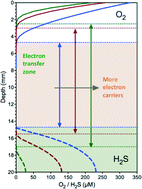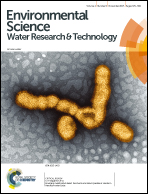Mathematical modeling of microbial extracellular electron transfer by electrically active microorganisms
Abstract
Extracellular electron transfer by electrically active microorganisms enables the conduction of electrons over long spatial distances in marine sediment, which plays an important role in global biogeochemical cycles through the generated electric currents. In this study, a mathematical model is developed to describe the extracellular electron transfer process by electrically active microorganisms through decoupling the oxidation and reduction processes, taking sulfide-oxidizing bacteria as examples. In this model, extracellular electron carriers are introduced as new components to link the oxidation and reduction reactions and to achieve the long-range indirect electron transport using decoupled Monod kinetics, allowing for the description of distinct separation of contrasting electrochemical regions. The developed model has been successfully applied to reproduce experimental data for sulfide oxidation and electron acceptor reduction via extracellular electron transfer from two independent study reports with different experimental conditions (oxygen or nitrate as electron acceptors) and transfer mechanisms (possibly different extracellular electron carriers) through calibration of three key parameters (koxi, kred and Kmed) that govern the long-range indirect electron transport. The model satisfactorily describes the experimental data from both systems, suggesting the validity and applicability of the model. Modeling results clearly showed two distinct zones with sulfide consumption (sediment floor) and oxygen (or nitrate) reduction (top surface) enabled by electron conduction via electron carriers. The model of this work would enhance our understanding of biogeochemical interactions with natural electric currents allowing oxidation and reduction processes to be spatially separated yet instantly and intimately coupled, while also potentially being applicable to a wide range of electrically active microorganisms.


 Please wait while we load your content...
Please wait while we load your content...